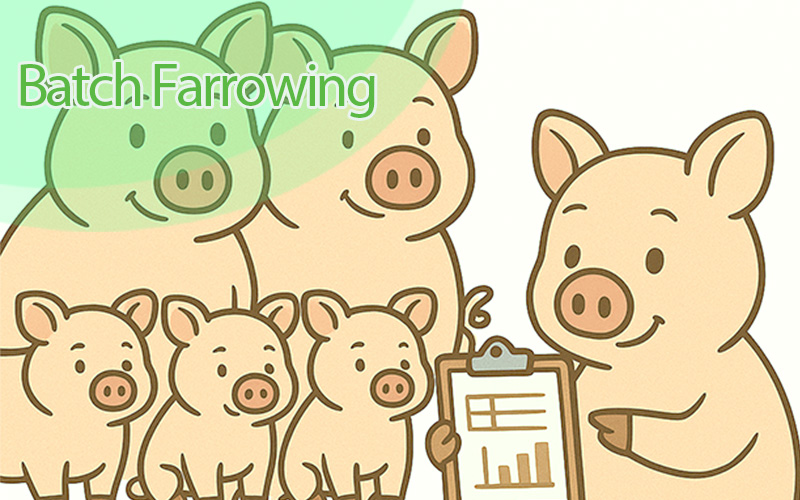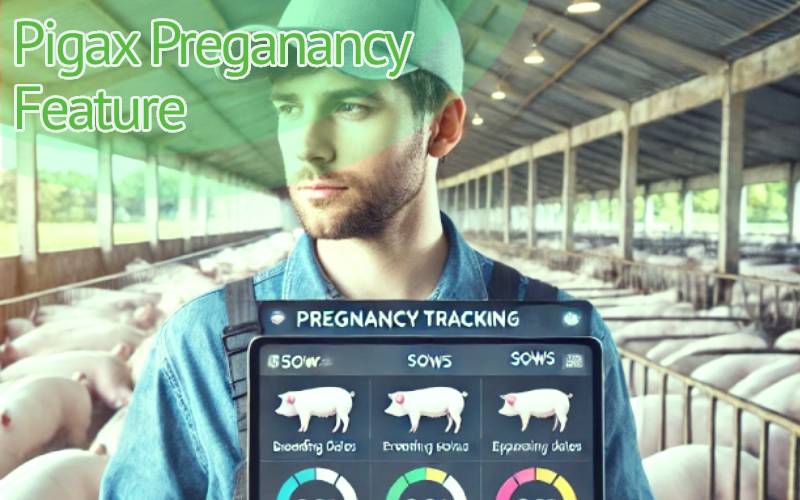Smarter Pig Production with Batch Farrowing on Pigax
Running a productive pig farm requires far more than feeding and housing animals. The real efficiency comes from how well you organize reproductive cycles and manage your data. Batch farrowing is one of the most reliable ways to bring structure, predictability, and productivity into your daily operations. With a digital swine management tool like Pigax, the system becomes even easier to adopt and maintain.
This guide explains how batch farrowing works, why it benefits farms of all sizes, and how Pigax helps you track each cycle with ease. Whether you manage a few sows or an entire commercial facility, this method gives you clearer routines, more confidence, and better outcomes.
Understanding Batch Farrowing and Its Value
Batch farrowing simply means grouping sows so they farrow within the same short time window. Instead of scattered farrowings throughout the month, breeding is arranged so litters arrive in pred
ictable intervals—such as every two, three, or four weeks. This synchronization allows farm work to follow a cycle rather than
chaos. Farrowing support, piglet processing, weaning, and cleaning all happen in organized blocks, creating a strong farm rhythm.
Producers who have used batch farrowing often say that without order, a farrowing program quickly becomes unmanageable. The system requires discipline—sows must be bred in planned groups, records must remain accurate, and schedules must be tracked carefully. But once the structure is in place, everything becomes much easier to manage.
Why Record-Keeping Matters in Batch Farrowing
Batch farrowing unlocks a long list of benefits for farms, but only when records are consistent. Good documentation helps you follow sow cycles, track piglet performance, and understand what’s working in your operation.
One of the most immediate advantages is the uniformity of the piglets. When piglets are born within the same few days, they grow at similar rates and follow the same feeding and vaccination schedule. This makes it far easier to track growth, identify weaker piglets, and manage them as a single unit rather than juggling different age groups.
Labor is also used more efficiently. Instead of spreading tasks across the entire month, your staff can focus on one batch at a time. Farrowing assistance, piglet treatments, cleaning, and weaning are done in an organized cycle. This reduces stress for workers, improves accuracy, and ensures the farm runs like a well-structured operation.
Biosecurity improves significantly too. With batch farrowing, you can apply an “all-in, all-out” flow where groups are moved as a unit. Once a batch leaves a pen, that area can be disinfected thoroughly before the next group arrives. This breaks disease cycles, limits cross-contamination, and supports stronger herd health overall.
The predictability of batch farrowing also enhances planning. Knowing when farrowings and weanings will happen allows you to prepare feed, staffing, and housing well in advance. It helps you forecast how many weaned piglets you will have in a month and makes financial planning much easier.
Facilities benefit as well. Pens and equipment are used more efficiently because animals move through the system in coordinated groups. This reduces overcrowding and prevents pens from sitting empty for long periods. It also lowers the stress level for the animals themselves, since each production stage flows smoothly from one step to the next.
Monitoring health becomes far simpler when dealing with uniform age groups. Vaccinations, deworming, routine checks, and growth assessments can be done at the same time for the entire batch. It’s much easier to notice problems when comparing piglets of similar size and development.
Finally, sow reproductive management becomes more predictable. When sows wean together, they come into heat around the same time. Heat detection and breeding become more efficient and less time-consuming. This helps identify high- and low-performing sows clearly, allowing you to improve your herd’s productivity over time.
How to Implement Batch Farrowing on Your Farm
Introducing batch farrowing on your farm starts with planning and consistency. The first step is deciding how many groups you want to handle within your production cycle. Many farms choose a three- or four-week interval, depending on their farrowing space and the number of sows they manage. The goal is to fill your farrowing rooms as a group, manage that group together, and then prepare the rooms for the next batch.
Breeding in groups is at the heart of the system. Instead of breeding sows individually throughout the year, you align them so their weaning and heat cycles fall within the same window. Good heat detection is essential here. In some cases, hormonal support may be used to synchronize cycles. Once bred, the sows form a batch that you can expect to farrow approximately 114 days later.
Synchronized farrowing naturally follows grouped breeding. Sows in the same batch usually farrow within two to three days of each other. This creates piglets of similar age and size, which simplifies feeding routines, weaning schedules, and health interventions. It also makes all-in/all-out management easy to maintain, which greatly improves sanitation and biosecurity.
Using Pigax to Track Batch Farrowing
Pigax is designed to make batch farrowing straightforward and organized. After registering your sows in the system, you can assign them to batches based on their breeding dates. Each batch receives a clear timeline inside your Pigax dashboard. This timeline shows breeding dates, expected farrowing periods, and projected weaning windows.
As farrowing dates approach, Pigax reminds you about upcoming events so you can prepare materials, organize staff, and ready the farrowing pens. After farrowing, you can record details such as total piglets born, number born alive, stillbirths, and weaning results. Because these records are grouped by batch, it becomes easy to evaluate the success of each cycle and identify patterns.
Pigax also allows you to generate detailed batch performance reports. These reports help you compare groups, analyze reproductive results, monitor piglet performance, and make informed decisions for future cycles. Everything is available in one place, removing guesswork and helping you maintain a professional, data-driven operation.
Common Pitfalls and How to Avoid Them
Even with a well-organized system, mistakes can happen. One common issue is forgetting to close old batches. When batches remain open unnecessarily, it becomes easy to confuse new records with old ones, which leads to inaccurate reports. Closing each batch after every event is completed keeps your data clean.
Another pitfall is missing important farrowing dates. Neglecting reminders or failing to check the Pigax dashboard can cause the team to be unprepared. Regular schedule reviews—weekly if possible—ensure nothing is overlooked.
Incomplete records are another frequent problem. Some producers only enter live births and skip details like stillbirths or piglet deaths. These omissions make it difficult to evaluate sow performance and overall batch success. Accurate data gives you more reliable insights, so it is worth taking a few extra minutes to update everything properly.
Team communication also plays a major role in successful batch farrowing. If your staff doesn't know which batch is approaching or which tasks are due, the system loses its effectiveness. Pigax helps by allowing tasks to be assigned to specific team members, keeping everyone aligned.
Ready to Improve Your Farm’s Efficiency?
Batch farrowing offers a structured, predictable way to manage your farm, and Pigax helps you put that structure into action with fewer mistakes and more confidence. If you're ready to modernize your operation, strengthen your routines, and gain clearer insight into your herd, now is the perfect time to get started. With the right approach and the right tools, you can create a smoother, more productive workflow for you and your team. Create an account with Pigax and start grouping your pig herd




